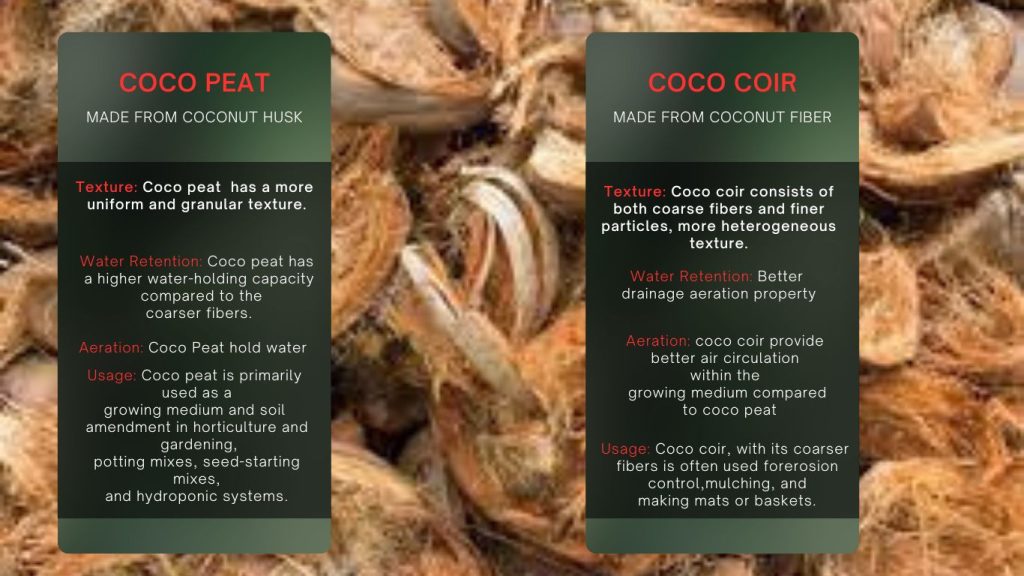
Coco coir can be used in various growing methods, including container gardening, raised bed gardening, hydroponics, and seed starting. Here’s a general overview of how to use coco coir in these growing methods:
Container Gardening:
a. Choose a container with drainage holes to ensure proper water drainage.
b. Fill the container with a mixture of coco coir and compost or organic potting soil. The ratio can be around 70% coco coir and 30% compost.
c. Moisten the coco coir mixture with water until it is evenly damp but not soggy.
d. Plant your desired plants or seeds in the container, following the recommended planting depths and spacing.
e. Water the plants regularly, keeping the coco coir mixture evenly moist. Coco coir retains water well, so be cautious not to overwater.
Raised Bed Gardening:
a. Prepare the raised bed by constructing a suitable frame or using an existing raised bed structure.
b. Fill the raised bed with a mixture of coco coir, compost, and garden soil. The ratio can be around 50% coco coir, 25% compost, and 25% garden soil.
c. Blend the materials together thoroughly to ensure even distribution.
d. Plant your vegetables, herbs, or flowers in the raised bed according to the recommended spacing and planting depths.
e. Water the raised bed regularly, ensuring that the coco coir mixture remains moist but not overly saturated.
Hydroponics:
a. Set up a hydroponic system of your choice, such as a nutrient film technique (NFT) system, deep water culture (DWC) system, or ebb and flow system.
b. Place coco coir grow bags, slabs, or blocks in the hydroponic system.
c. Ensure the coco coir is properly moistened and saturated with a nutrient solution specifically designed for hydroponic use.
d. Plant your chosen hydroponic plants or seeds in the coco coir medium, following the recommended spacing and planting depths.
e. Monitor and maintain the hydroponic system, providing adequate nutrient solution and regular watering to the coco coir medium.
Seed Starting:
a. Fill seed trays or pots with a mixture of coco coir and vermiculite or perlite. The ratio can be around 70% coco coir and 30% vermiculite or perlite.
b. Moisten the coco coir mixture with water until it is evenly damp but not overly wet.
c. Sow your seeds according to the recommended depths and spacing.
d. Place the seed trays or pots in a warm and well-lit area, providing the appropriate conditions for seed germination.
e. Keep the coco coir mixture consistently moist by watering from the bottom or misting the surface.
f. Once the seedlings have developed, they can be transplanted into larger containers or directly into the garden.
When using coco coir, it’s important to note that it has a neutral pH level. Depending on your plants’ specific needs, you may need to adjust the pH by adding amendments or using a pH-adjusted nutrient solution in hydroponics. Regular monitoring of moisture levels, nutrient requirements, and overall plant health is essential for successful growth when using coco coir as a growing medium.

